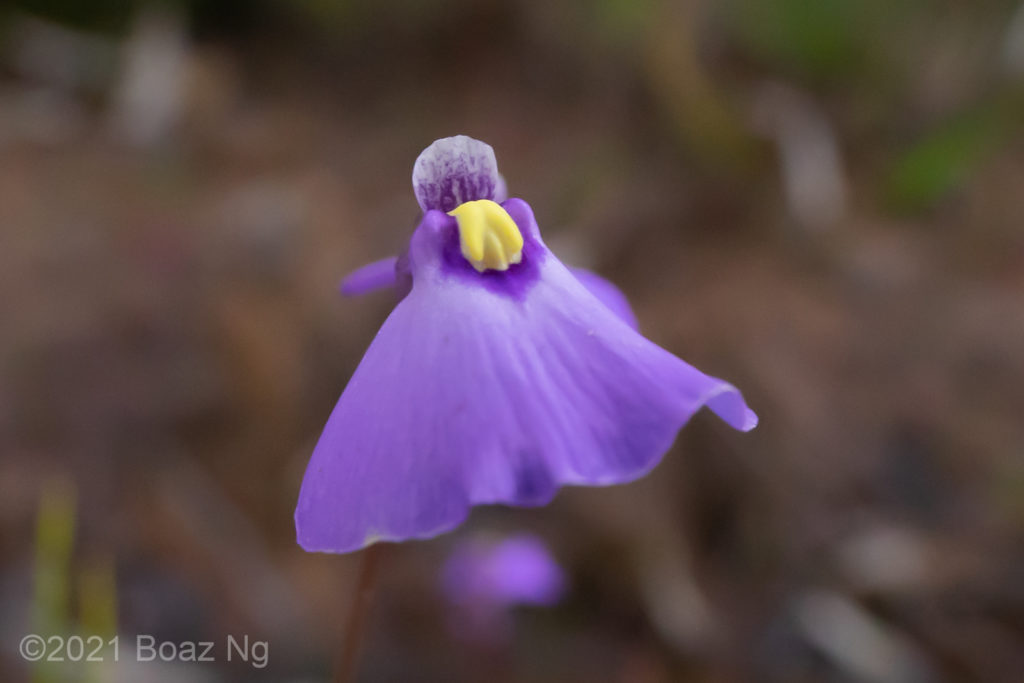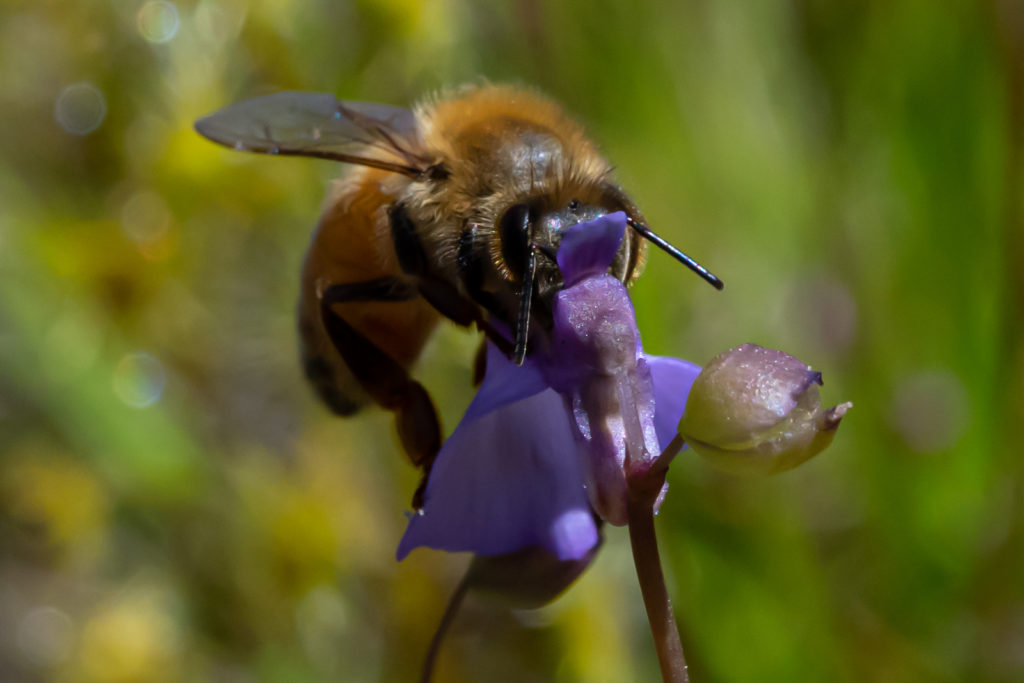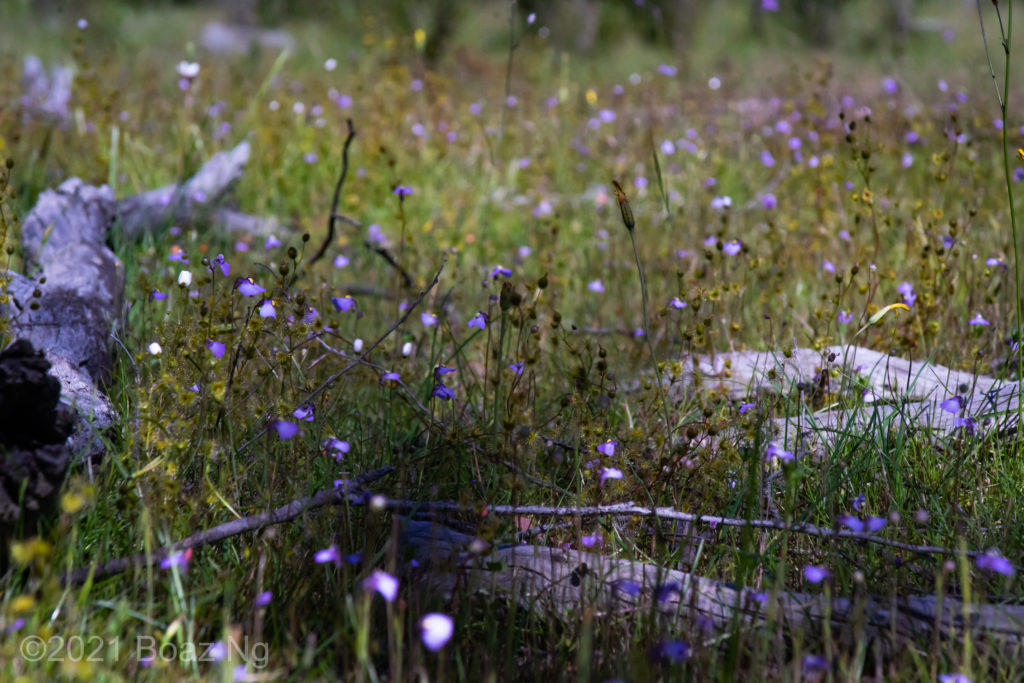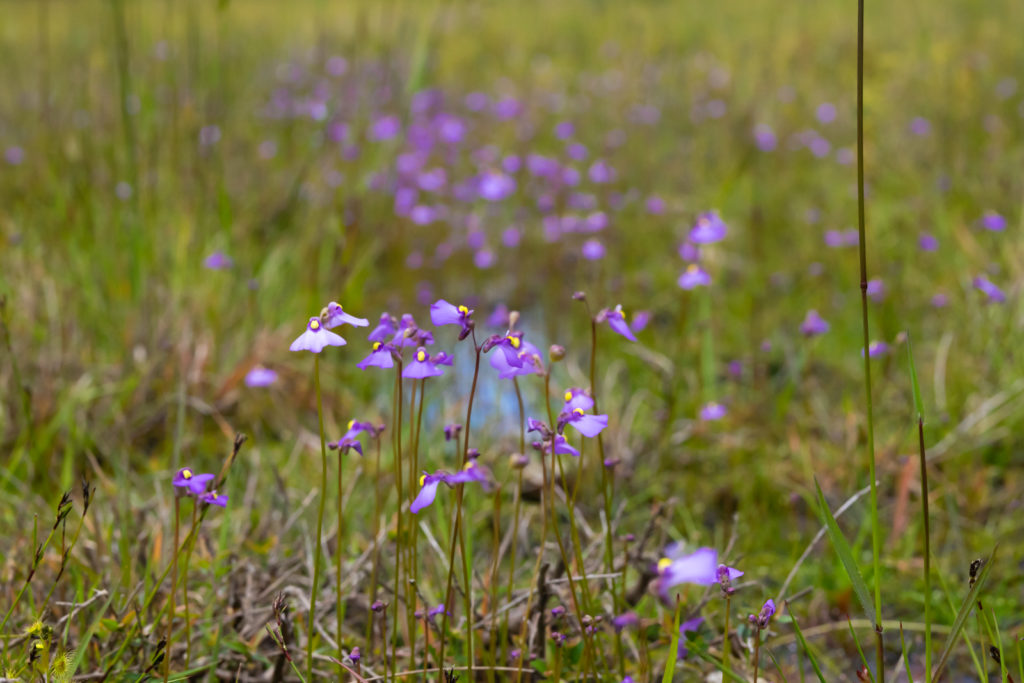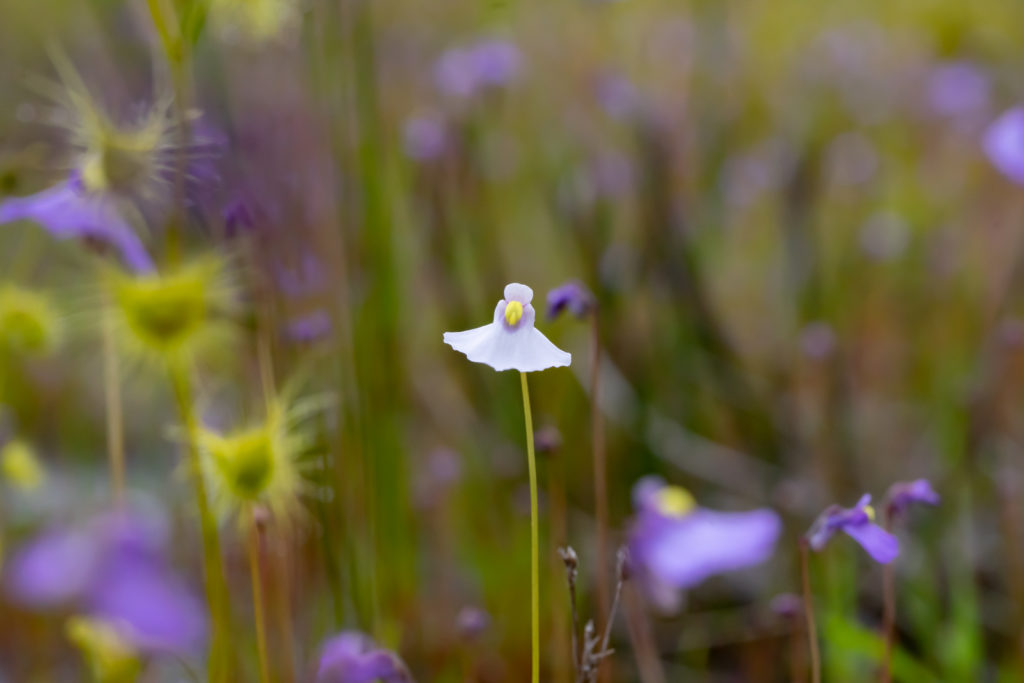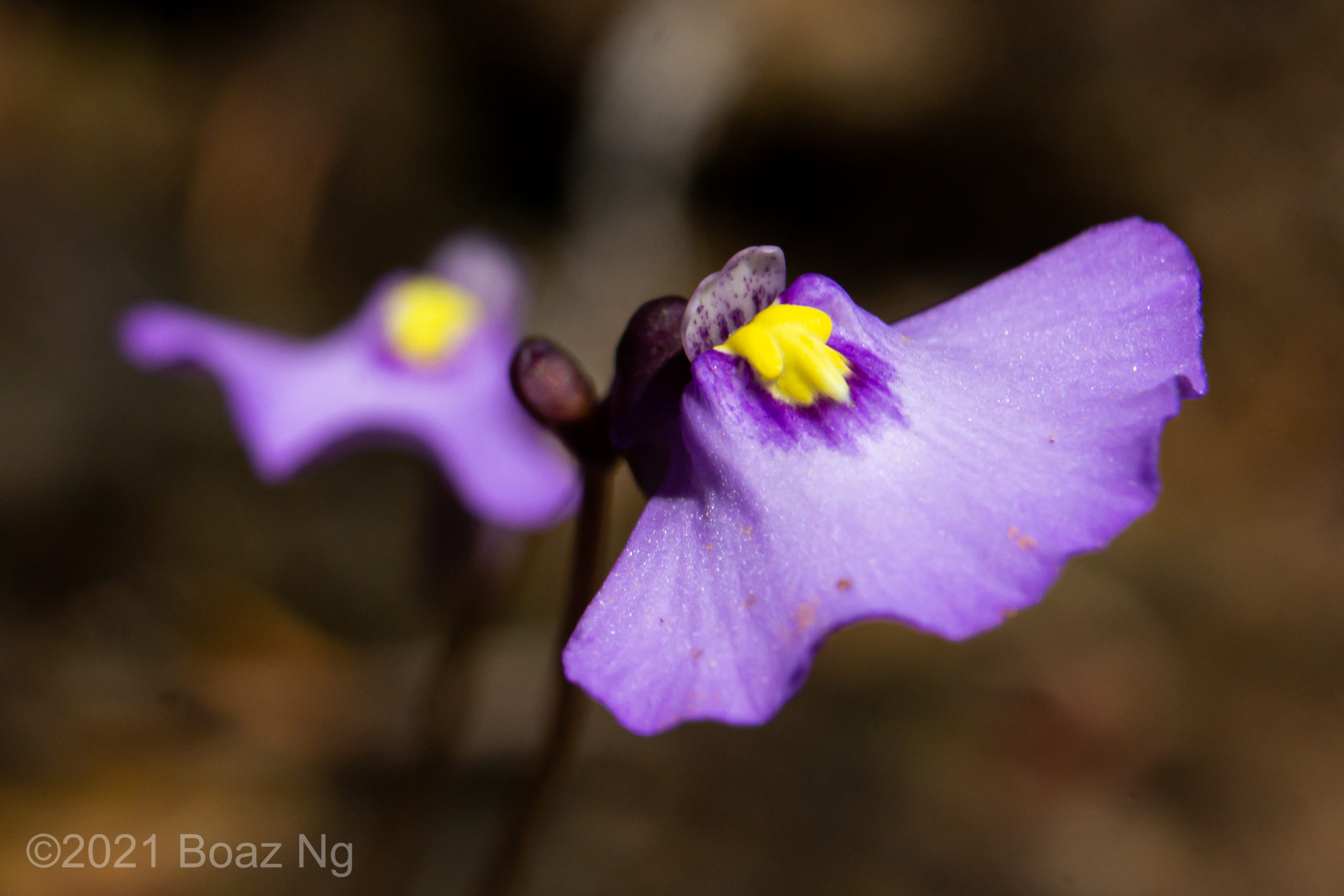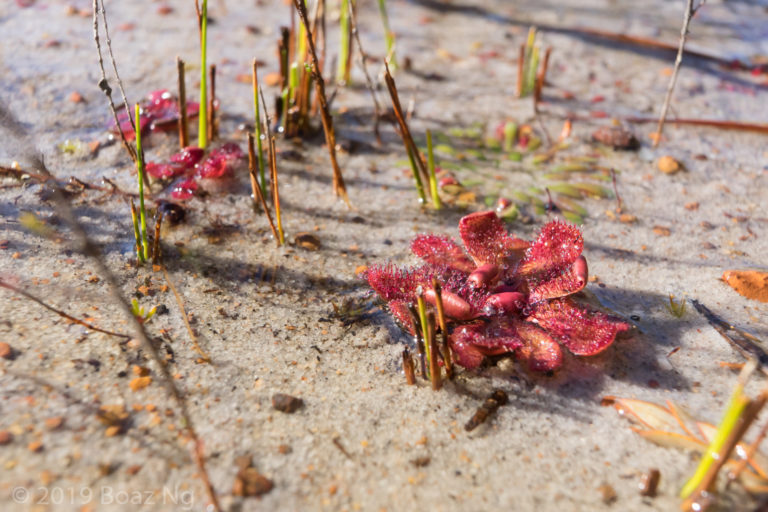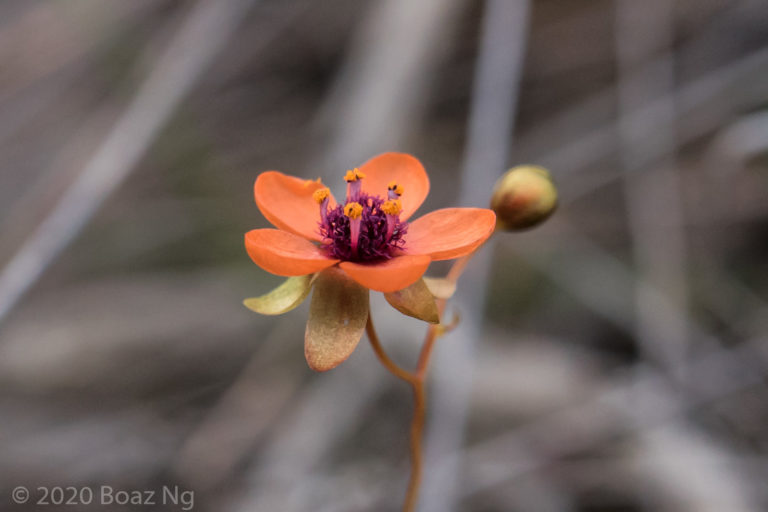Utricularia barkeri is an emergent terrestrial bladderwort that is native to south eastern Australia. It was formally described by Jobson in 2013 and is often confused with other members of the U. dichotoma complex.
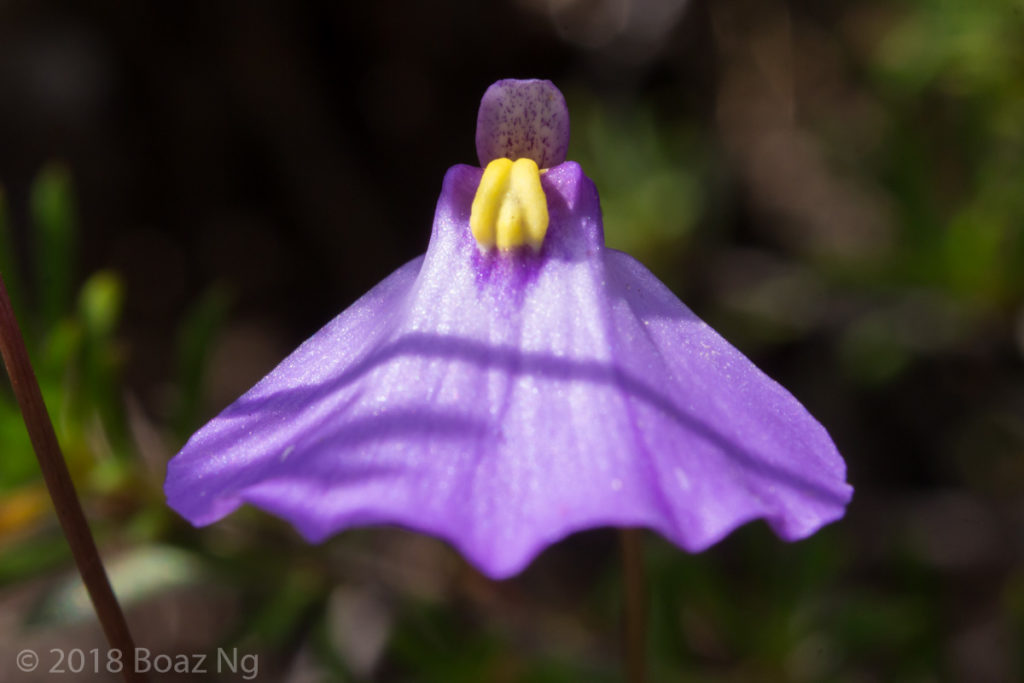
U. barkeri grows purple flowers, mainly during spring and summer. The lower corolla lip usually flares outwards and downwards. Towards the palate, the petal is constricted and forms ‘shoulder’ like protuberances that flank the yellow ridges. The upper corolla lip is usually cream and light purple, and has distinctive speckled with dark purple spots. The bracts and bracteoles are basisolute (attached to the stem in the middle), with conspicuous upper and lower sections. The leaves are long and strappy.
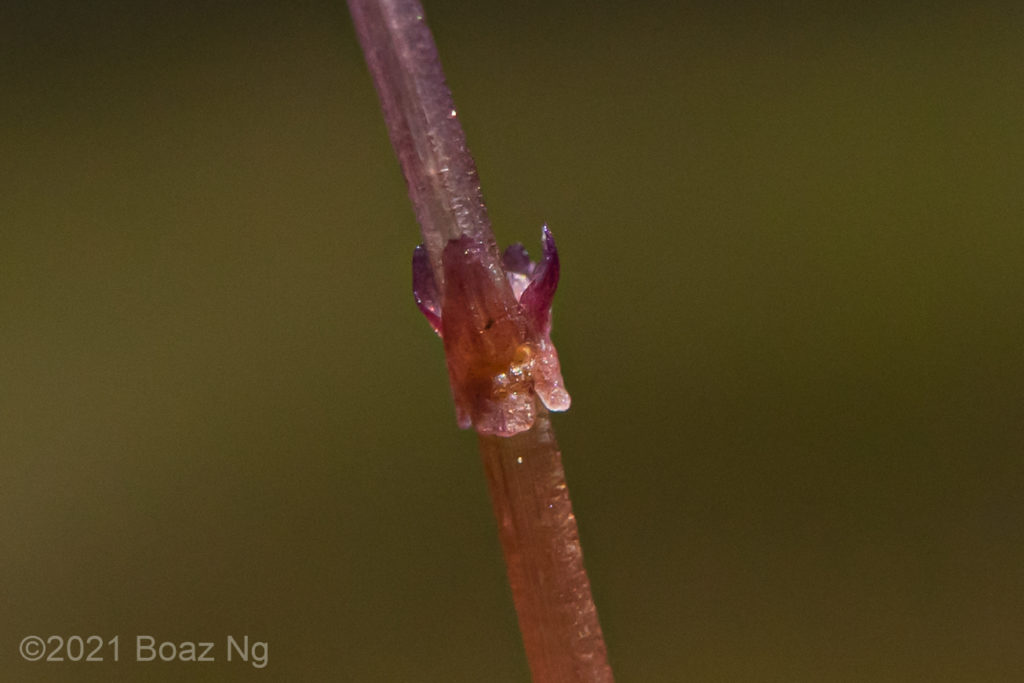
Utricularia barkeri is native to the southern Australian states of Victoria, South Australia, and Tasmania. In Victoria, where I have observed plants in the wild, the species is mainly distributed from Wilsons promontory, up to Melbourne and across western Victoria. It is found in seepages, wet sides of walking trails, seasonally inundated ditches and the flood plains of swamps and creeks. The species chiefly grows during winter, and flowers in spring and summer. It is considered a perennial species but can persist as an annual in the many niches that dry out during summer.
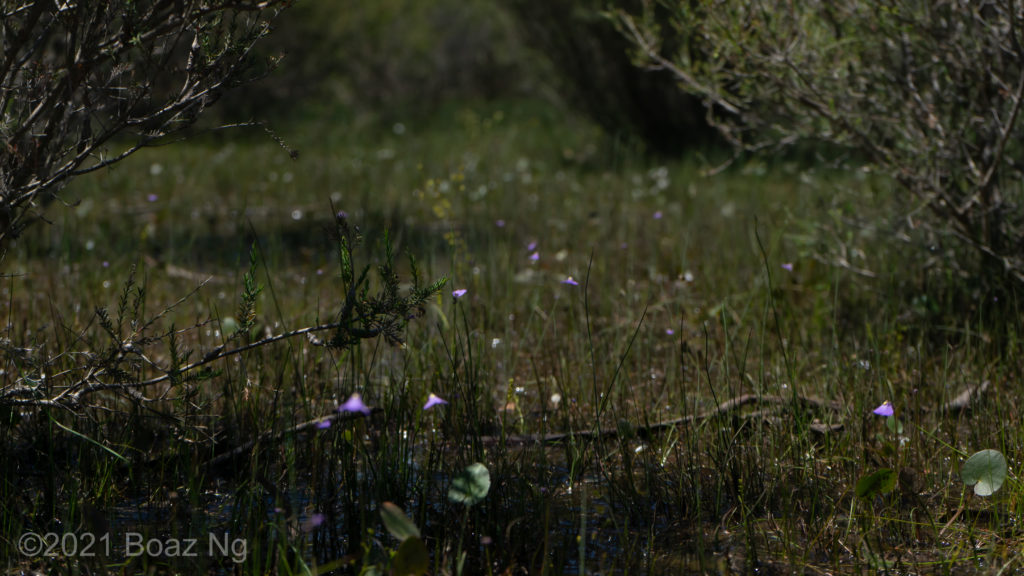
Like many purple flowered bladderworts, U. barkeri was previously lumped together within the Utricularia dichotoma complex but is now considered a species in its own right. U. barkeri is distinguished from the U. dichotoma complex through a combination of a speckled upper corolla (as opposed to striped or plain upper corolla) and basiolute bracts (those of U. dichotoma are fixed at their base). The flowers are somewhat similar to U. grampiana, especially in unfavourable environmental conditions. The latter species can be distinguished from U. barkeri by the yellow ridges on the palate, which conspicuously overhang the lower corolla and specific niche in the seepages of the Grampians range.
